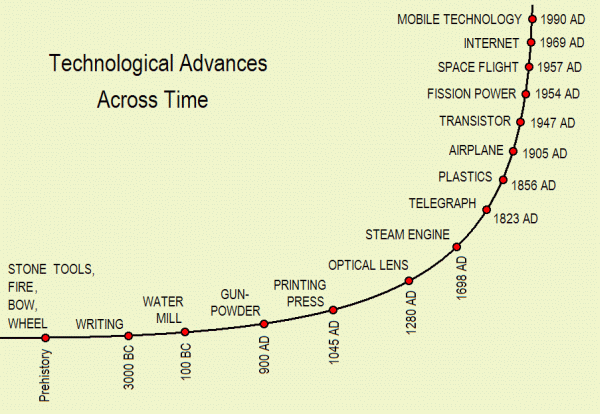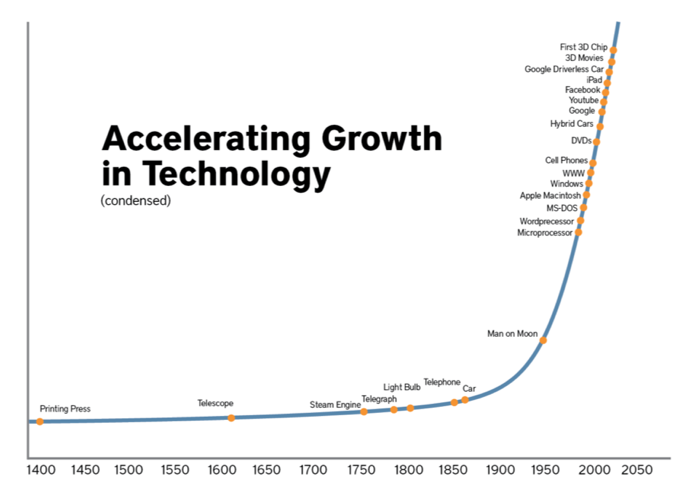How Advances in Modern Technologies Are Accelerating Human Evolution
The Forces of Evolution
Evolution occurs when traits that increase an organism’s ability to survive and reproduce become more common in a population over generations. Two main mechanisms drive this process - natural selection and genetic drift. Natural selection occurs when some individuals in a population are better able to survive and produce more offspring due to heritable traits. For example, giraffes with slightly longer necks had an advantage in accessing food, so this trait became more prevalent over time. Genetic drift is random changes in gene frequencies that can happen by chance within small populations. Even without environmental pressures, drift alone is enough for evolution to occur as genes are lost or become more common at random. For much of human history, environmental pressures and minimal medical intervention meant these evolutionary forces strongly shaped our species. However, advances in technology have significantly altered humanity’s relationship with natural selection and genetic drift.

Altered Reproductive Pressures
Developed societies have vastly reduced child mortality through innovations like water sanitation, vaccinations, and modern medicine. While increasing lifespans, this reduced selective pressures on traits related to coping with disease and infant survival. Moreover, widespread access to reliable birth control has decoupled human reproduction from biological urges. In developed nations, voluntary fertility rates have fallen far below replacement levels. Meanwhile many developing regions still experience high birth rates, if declining. This bifurcation subjects humanity to wildly different evolutionary pressures. Developing populations face less selection while developed populations experience an evolutionary “pressure cooker” effect. With sub-replacement fertility, certain genes may become rarer over generations due simply to random chance rather than fitness.
Emerging Reproductive Strategies
Faced with these novel pressures, evolution is adapting human reproductive strategies. Any genetic factors influencing the decision to have children, or ability to successfully raise large families, gain prominence.
Twin births confer an advantage by increasing fertility nearly 50% in one pregnancy. Likewise, strong parental instincts and aptitude for successfully parenting multiple offspring provide benefits. Religions encouraging large families like the Amish and Ultra-Orthodox see rapid population growth, though maintaining traditionalism amid modernity poses challenges.
Technologies may also usher in new methods of reproduction. Donated sperm allows some to bypass biological urges while still producing offspring. Same-sex couples now have greater options to start families through assisted means. How these divergent pathways sculpt humanity’s gene pool remains unknown.
Accelerated Evolution
Far from halting our evolution, advances explosively accelerate it. In traditional heredity, variations spread over vast eras. However, fertility crashes, mass migrations, and medical interventions fuel evolutionary changes unfolding within mere generations. Shifts once playing out over millennia now transpire in decades. As preferences around relationships, parenting, and family structures evolve, underlying genetic predispositions adapt apace. Traits selected against today may disappear from the gene pool within a handful of life cycles. By warping environmental influences and disrupting ancestral reproductive norms, modernity kickstarts human evolution into hyperdrive. Within mere centuries, our species may evolve traits unrecognizable to contemporaries, propelling an unprecedented transformation.
The Emerging Selective Pressures
Certain evolutionary pressures have arisen from societal changes wrought by new technologies: Lowered child mortality means traits enhancing infant survival no longer confer significant advantages. Genes linked more to nurturing abilities and fertility take precedence. Widespread birth control allows consciously limiting family sizes. Any genetic factors influencing desires for parenting gain influence, while traits supporting promiscuity lose relevance to reproduction. Rising individualism favors genes enabling fulfilling independent lifestyles, like educational attainment and career aspirations, over familial/community-oriented dispositions. This exerts new selective forces. Urbanization has broken ancestral bonds to extending kin/tribal structures. Adaptability to modern nuclear family constructs and fast-paced metropolitan settings brings reproductive benefits. Market productivity rewards genes predisposing people towards economically valuable skills. Aptitude for specialized technical/professional roles becomes selected for over subsistence-based talents.
New Breeds of Winners and Losers
As natural selection hinges on reproduction rates, those adapting quickest to emerging evolutionary pressures gain prominence: Winners may include the religiously traditional for maintaining high fertility, and “baby lovers” whose deep parental instincts and nurturing abilities exceed social/biological norms. Professionals attaining stable relationships and supporting large families also gain selective advantages. In contrast, genes predisposing people to behaviors now disconnected from reproduction may dwindle. **“Accidental”` births decrease as birth control improves, and promiscuity without offspring production loses evolutionary significance. Strict anti-abortion views alone may not substantially boost fertility outcomes either. Lifestyles valuing independence, education and career over starting families could find diminished representation going forward if genes for these behaviors fail augmenting reproductive success. Demographic changes and new reproductive strategies will continually reshape who evolves to become humanity’s future winners and losers.
Evolving Reproductive Behaviors
Reproductive behaviors show early signs of adapting to modern pressures. Initiatives like modern contraception and assisted reproductive technologies provide greater controls over the fertility process. However, our ancestral instincts took millennia to develop and do not update instantly.
Some populations see a “twinner advantage” as multiple births boost fertility. Likewise, strong desires for achieving complete families may drive decisions to have additional children. Cultural norms encouraging larger families also aid propagation of related genetic tendencies.
Same-sex couples using sperm donation sidestep biological influences on sexual orientation while still producing offspring. Lesbian partnerships employ similar means going forward. However, it remains unclear if these reproductive channels substantively impact humanity’s future genetic composition.
Sexual behaviors diversify with easier birth control access and relationship flexibility. But disassociating sex from reproduction risks evolutionary irrelevance for related genetic factors. Traits impactingpair-bondingstability and multiparent care responsibilities face new selective filters.
As natural selection optimizes species for their current environments, humanity’s radically altered child-rearing paradigms compel our instincts into rapid redevelopment. How genetic and behavioral reproductive strategies mutually transform portends massive changes to the human condition.
Emerging Changes to Human Nature
By warping selective pressures through technology, modernity propels humans down uncharted evolutionary paths. Within a handful of generations, emerging changes may fundamentally reorder human nature itself:
Diminishing environmental challenges reduce selection for traits like strong immunity, physical prowess and large brains once crucial to survival. Emphasis shifts to nurturing, social and creative talents preferred in civilized settings.
Deep bonding and parental instincts intensify as primary attractions conferring evolutionary benefits. Strong familial commitment and desires for raising offspring emerge as dominant human drives.
Tribal affiliations weaken while independently successful lifestyles rise, selecting for self-sufficiency, cognitive flexibility and abstract thinking. Cooperation expands beyond immediate kin to all humanity.
Heightened conformity to rules and specialized work develops through pressures selecting for nuanced communication, dexterity and sedentary livelihoods. Dominance hierarchies simplify into egalitarian organizations.
As humanity’s relationship with nature alters, so too its fundamental essence changes. Modern life redesigns human nature from the geneticroots up through rapidly shifting the selective pressures sculpting our species. This presages a future as remarkable as any in our evolutionary past.
Understanding Humanity’s Novel Evolution
Understanding how modernity accelerates human biological and cultural evolution holds profound implications. Recognizing emerging changes to our nature enables grappling with coming transitions.
Foreseeing likely evolutionary winners and losers may help navigate societal divisions. Appreciating evolutionary mismatch can reduce psychological discord from clashing ancestral instincts and current conditions.
Realizing humanity’s past comprised continuousmicroadjustments stemming from environmental feedback places today’s swift shifts in perspective. Our species transforms more rapidly than ever before yet change remains its only constant.
Being conscious participants in our evolution demands accepting change instead of fearing it. Adapting policies and relationships to impending transformations builds resilient, equitable futures. Aligning technological progress withNature’s genetic architectures fosters symbiosis over discord.
By thoughtfully observing the dynamic interplay between nature, nurture and our technologies, we gain empowerment over humanity’s trajectory. Understanding our novel evolution kindles hope thatintelligence and compassion can guide coming changes to benefit all. The future remains unwritten.

